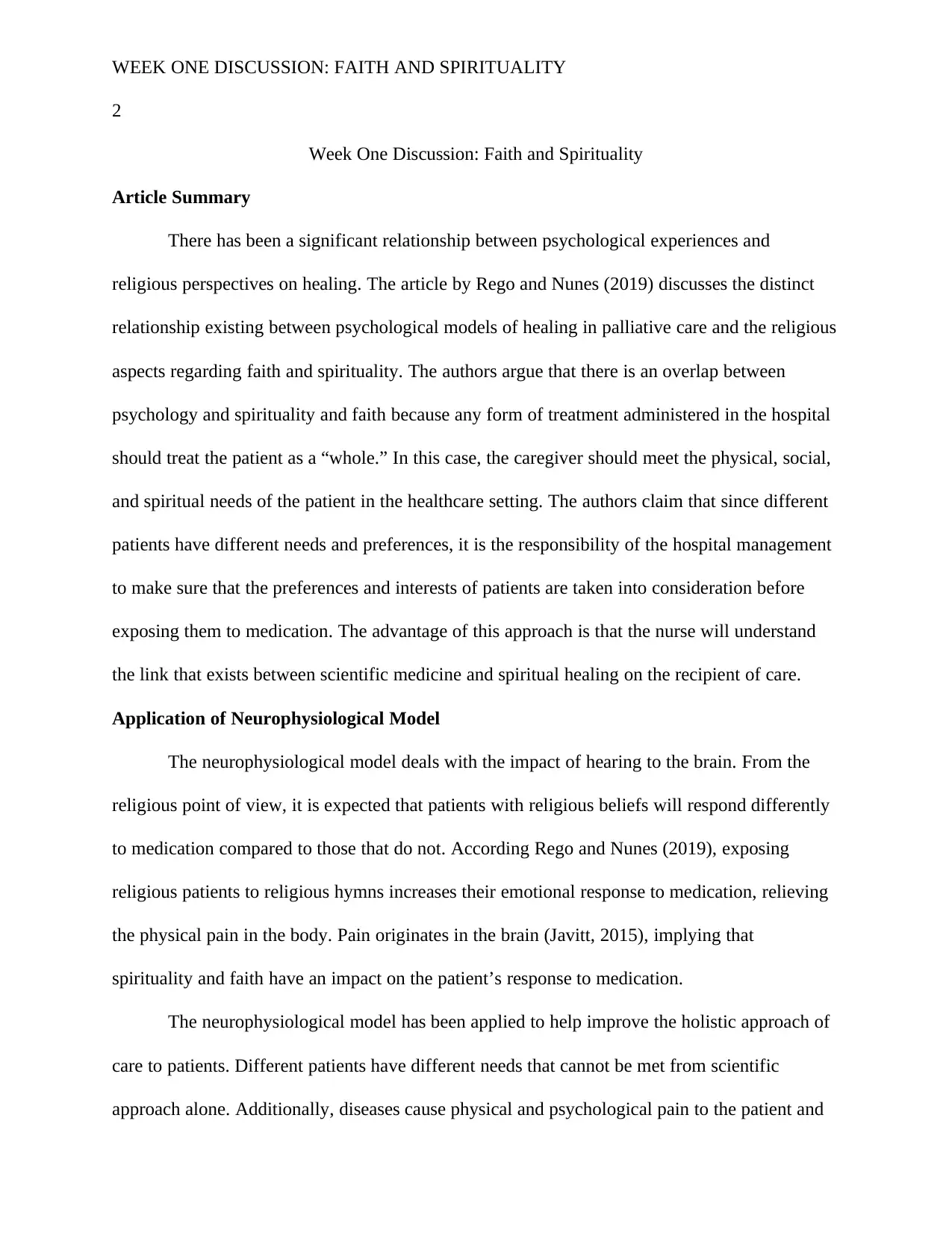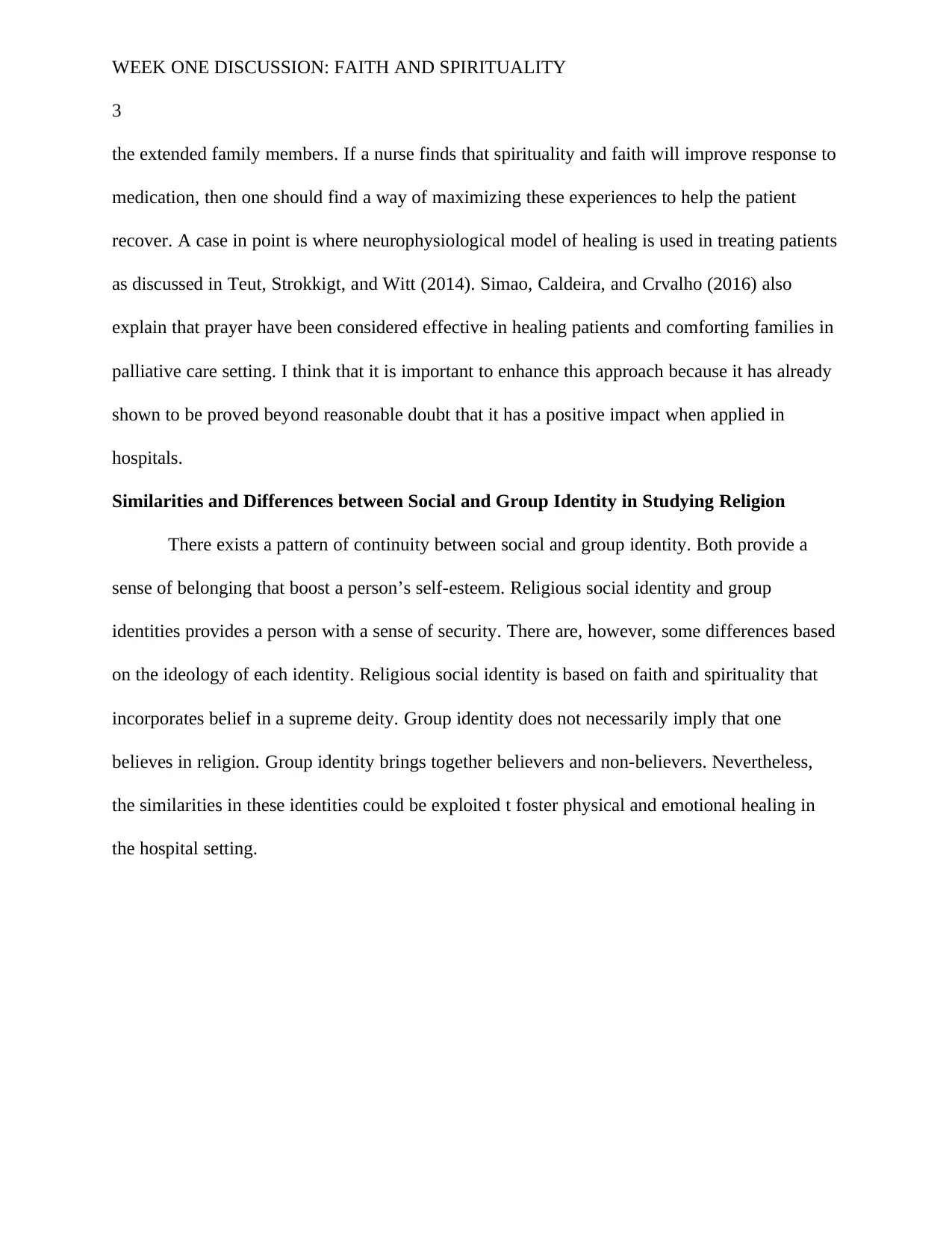Faith, Spirituality, and Psychological Models in Religious Cognition
VerifiedAdded on 2022/11/15
|4
|753
|298
Discussion Board Post
AI Summary
This discussion explores the psychological perspectives on faith and spirituality, summarizing an article that examines the relationship between psychological models of healing in palliative care and religious aspects. It discusses how the neurophysiological model applies to spiritual experiences, highlighting the impact of faith on a patient's response to medication and pain perception. The discussion also touches on the application of the modal model to religious cognition and examines the similarities and differences between social and group identity in the context of religion, emphasizing the sense of belonging and security they provide. The overall viewpoint suggests a pattern in the psychological components of religion, advocating for a holistic approach to patient care that integrates both scientific medicine and spiritual healing. Desklib offers additional resources, including past papers and solved assignments, to support students in their studies.
1 out of 4










![[object Object]](/_next/static/media/star-bottom.7253800d.svg)